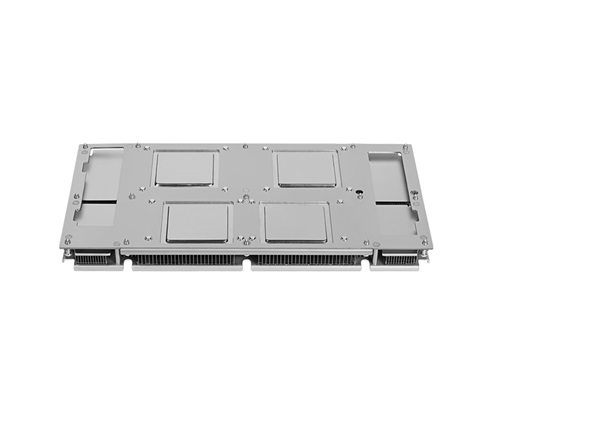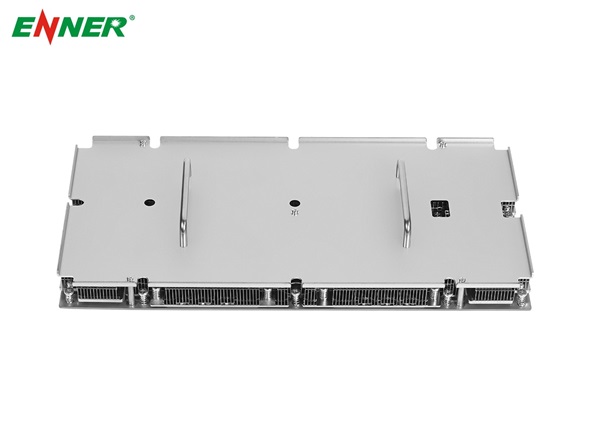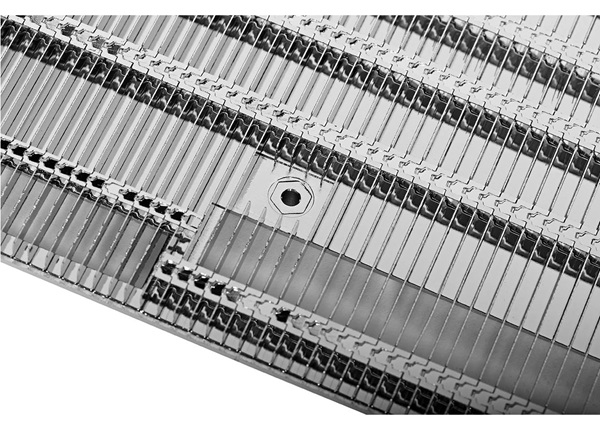In modern electronics, the pursuit of more power in a smaller footprint has made thermal management one of the biggest design challenges. As devices shrink and processing power increases, traditional cooling methods often fall short. Vapor chamber heatsinks have emerged as a next-generation thermal solution, offering powerful heat spreading performance in compact, adaptable formats. Whether in gaming laptops, data servers, or electric vehicles, these components are helping engineers push the limits of heat dissipation.

A vapor chamber heatsink is a type of passive heat transfer device designed to spread heat efficiently across its surface. At its core, a vapor chamber is a sealed, flat metal enclosure containing a small amount of working fluid—often water. The inside of this chamber is lined with a wick structure that facilitates capillary action. When heat is applied to one section of the chamber (usually from a chip or heat source), the working fluid evaporates into vapor, which rapidly spreads across the chamber and condenses on cooler surfaces, releasing its heat.
This cycle repeats continuously and passively, enabling highly efficient heat transfer. Unlike traditional heat pipes, which primarily move heat along a linear path, vapor chambers provide two-dimensional heat spreading. That makes them especially effective at managing multiple heat sources or preventing hotspots across a flat surface.
They are typically paired with fin stacks or fans, turning them into complete thermal modules capable of dissipating heat into the surrounding air. The result is a cooling system that maintains a consistent temperature gradient, essential for stable device operation in mission-critical or high-performance environments.
As electronic systems become more power-dense, managing thermal loads becomes increasingly difficult. Heat buildup can cause everything from thermal throttling to component degradation. Vapor chamber heatsinks address these issues by offering uniform temperature distribution and faster thermal response than many conventional methods.
For devices like high-performance CPUs, GPUs, or AI accelerators, even slight temperature differences across a chip surface can lead to performance inconsistencies. Vapor chambers minimize these differences by rapidly distributing thermal energy across their surface. This uniformity reduces thermal stress and improves reliability, especially in workloads with rapid thermal fluctuations.
In high-power electronics, such as 5G base stations or power inverters, heat is often generated at multiple points. Vapor chambers excel at managing these distributed sources because they aren't bound to a single-axis heat path. Their ability to handle non-uniform and unpredictable thermal loads makes them highly versatile in complex systems with unpredictable usage patterns.
Their directional independence is another major advantage. Unlike heat pipes, which rely on orientation for optimal fluid return, vapor chambers can operate effectively in any position. That makes them ideal for portable and mobile devices, including rugged tablets, drones, or embedded systems in automotive and aerospace applications.

One of the most significant benefits of vapor chamber heatsinks is their ability to support thin and compact form factors. As consumer electronics move toward thinner designs, the cooling solution must also adapt. Vapor chambers provide powerful thermal performance without requiring significant vertical space, which is especially valuable in ultrabooks, tablets, and wearable devices.
The flat geometry of a vapor chamber also allows direct contact with heat sources, reducing thermal interface resistance. With improved contact and surface uniformity, the heat flows more efficiently into the heatsink and out to the fins or ambient environment. This leads to better overall thermal conductivity and a reduction in energy waste due to inefficient heat spreading.
From a structural standpoint, vapor chambers are also inherently robust. Unlike traditional finned heatsinks, which may deform under stress, vapor chambers distribute mechanical and thermal stress evenly. This structural integrity supports reliable long-term operation even under fluctuating thermal cycles or harsh vibration conditions.
Furthermore, vapor chambers can be integrated into hybrid cooling systems. Engineers often embed them into cold plates, add fin arrays for forced convection, or combine them with thermoelectric modules for active cooling. Their modularity gives designers more flexibility in balancing cooling performance, size, and cost across a wide range of applications.
Most vapor chambers are made from high-conductivity metals like copper due to its excellent thermal performance. Copper also offers compatibility with the working fluid and structural integrity under vacuum. In some cases, aluminum or stainless steel may be used for weight or corrosion resistance, depending on the system's operating conditions.
Inside the vapor chamber, the wick structure plays a critical role. Common wick designs include sintered powder, screen mesh, and grooved channels. These structures enable the capillary return of condensed liquid back to the heat source. Each structure type balances permeability, thermal resistance, and manufacturing complexity differently, making the choice application-specific.
The working fluid—typically water—is selected for its favorable boiling and condensation characteristics in electronics. However, for extreme environments, alternatives like ammonia or acetone may be used. The compatibility between the fluid, wick, and chamber wall materials is critical to ensure long-term reliability and prevent chemical reactions that could degrade performance.
Precision manufacturing is essential to ensure vacuum integrity and proper fluid containment. Key steps include CNC machining, wick sintering, fluid charging, and vacuum sealing. Laser welding is often used to close the chamber with minimal thermal distortion. Leak testing, helium mass spectrometry, and thermal cycling simulations are employed to verify integrity before deployment.
As manufacturing technologies advance, vapor chambers are becoming more customizable. Varying thicknesses, cavity depths, and segmented internal wicking regions can be designed to address unique thermal challenges, allowing the vapor chamber to adapt to rapidly evolving hardware demands.
Vapor chamber heatsinks are now used in nearly every industry that deals with compact, high-performance electronics. In consumer electronics, they're found in flagship smartphones, gaming laptops, VR headsets, and smart wearables. These devices generate considerable heat in very confined spaces, making uniform temperature control essential for usability and longevity.
In the industrial sector, vapor chambers support mission-critical computing platforms, such as industrial PCs, medical imaging systems, and high-precision sensors. Their ability to ensure consistent performance over time makes them valuable in environments where maintenance windows are limited or temperature regulation is difficult.
The automotive industry is also embracing vapor chamber cooling. Electric vehicle battery packs, inverters, LiDAR sensors, and infotainment systems generate increasing amounts of heat. Vapor chambers help maintain safe thermal margins while supporting compact packaging needs. Their passive operation also makes them suitable for use in environments where noise or airflow is limited.
Data centers represent another growing market. High-density servers, GPUs for AI workloads, and custom ASICs all demand tight thermal control. Vapor chambers are used in both air-cooled and liquid-cooled assemblies, sometimes in combination with cold plates or vapor-liquid hybrid systems, to ensure high efficiency and reliability.
Even aerospace and defense systems benefit. Avionics, satellites, and radar systems often operate in environments with limited airflow and extreme temperature variation. Passive, orientation-independent cooling is ideal in such scenarios, and vapor chambers are often customized to meet strict military and aviation standards for vibration, outgassing, and heat tolerance.

While vapor chambers share similarities with heat pipes, their thermal performance characteristics are quite different. Heat pipes are excellent for transporting heat from point A to point B along a linear path. However, vapor chambers are better at spreading heat across a surface. That makes them more suited to applications with multiple or large-area heat sources.
Compared to solid metal heatsinks, vapor chambers offer far superior thermal conductivity. A solid copper baseplate relies on conduction alone, which can result in localized hotspots. Vapor chambers eliminate these hotspots by using phase change and convection inside the chamber to rapidly transport heat laterally.
In terms of weight, vapor chambers may be heavier than aluminum solutions but lighter than full copper blocks with equivalent thermal capacity. The performance-per-gram ratio makes them ideal for mobile or aerospace systems where every gram counts. Additionally, vapor chambers reduce dependency on fans or bulky airflow designs, which can help lower system complexity and failure risk.
Cost is another consideration. While vapor chambers are more expensive than basic heat sinks or heat pipes, they offer better long-term value in many cases due to enhanced reliability and thermal uniformity. Their ability to support thinner form factors can also reduce mechanical design costs elsewhere in the product.
Selecting the right vapor chamber starts with understanding your system's thermal budget. Determine the maximum heat load (TDP) and identify all heat sources. Also consider how evenly the heat is distributed and what kind of temperature uniformity is needed at the interface between the vapor chamber and the heat-generating components.
Next, look at form factor and mechanical constraints. Vapor chambers come in many shapes and sizes, including square, rectangular, and custom-cut geometries. Thickness is also a factor—thin chambers are often used in mobile devices, while thicker ones may support higher heat loads and greater structural rigidity.
Attachment method matters too. Some vapor chambers are integrated into full heatsink assemblies with mounting holes and thermal interface materials already applied. Others are embedded into complex modules or soldered directly onto PCB layers for tighter integration. Understanding your assembly method can help narrow down design parameters early in development.
For advanced systems, custom design is often the best route. This allows optimization of vapor space, wick structure, and fluid properties to suit specific operational and environmental conditions. Collaboration with a vapor chamber manufacturer can help ensure optimal thermal performance, even under dynamic workloads or harsh usage cycles.
Vapor chamber heatsinks are more than just another cooling option—they represent a strategic advantage in thermal design. Their ability to maintain uniform temperatures, handle multidirectional heat sources, and support slim profiles makes them a go-to solution in demanding applications.
Whether you're working on next-gen electronics or refining an existing system for better thermal efficiency, vapor chambers offer proven performance and design flexibility. For custom inquiries or detailed product options, contact us at [email protected].
By continuing to use the site you agree to our privacy policy Terms and Conditions.